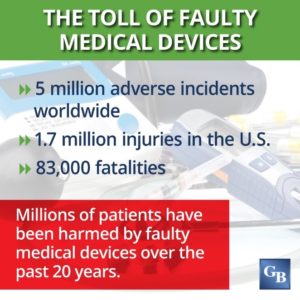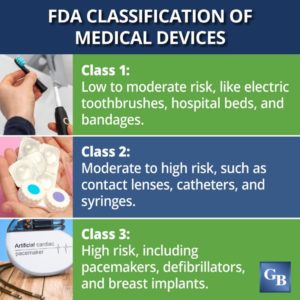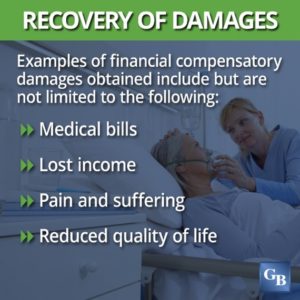Millions of Americans rely on prescribed drugs and medical devices approved by the U.S. Food and Drug Administration (FDA). Consumers assume that approved drugs and devices are reliable and will work as expected. Unfortunately, not all these products are completely safe. Too often, profits drive pharmaceutical companies and medical device manufacturers, and at times, they may take shortcuts in testing or production to save money. In some instances, they may use questionable marketing tactics to sell more products. These actions may result in patients suffering injury, illness, or death.
Galfand Berger LLP Stands Up for the Rights of Injured Individuals
If a dangerous drug or faulty medical device has harmed you or a loved one, contact the legal team at Galfand Berger LLP to find out more about their right to recover. We have been advocating on behalf of injured individuals and their families for more than 70 years, and we have the experience, resources, and determination to help victims obtain fair recovery of damages.

How Many People Have Been Injured by Medical Devices?
More than five million adverse incidents involving medical devices worldwide have been reported to the FDA over the past two decades. This fact was revealed in 2019 when the FDA published statistics from a database that had previously been kept secret. About 1.7 million of these reported incidents resulted in injury to U.S. citizens, according to an investigation of this database conducted by the International Consortium of Investigative Journalists (ICIJ). Tragically, about 83,000 fatalities have also been linked to faulty medical devices.
There are many different types of injuries caused by faulty medical devices, including serious infections, debilitating pain, metal poisoning, nerve and tissue damage, internal bleeding, and deadly cancers. Oftentimes, patients are not aware that their adverse medical condition is a result of an implanted medical device.
What Types of Medical Devices Cause Injury?
There are nearly 200,000 types of FDA-approved medical devices available in the United States today. Most of them are safe and effective. However, in the past, some types of medical devices have caused injury more frequently than others, including but not limited to the following:
Spinal cord stimulators. These implanted devices are designed to relieve pain by sending low levels of electricity directly to the spinal cord. In some cases, inserting a spinal cord stimulator may cause severe headaches, nerve damage, and paralysis. Spinal cord stimulators account for the third highest number of medical device injuries reported to the FDA.
Metal hip replacements. More than 29,000 lawsuits have been filed against manufacturers of metal-on-metal artificial hips. The design flaw causes metallosis, which destroys muscle tissue and bone.
Insulin pumps. Thousands of people have been injured by insulin pumps that were finally recalled by the FDA in 2020. The defective pumps had missing or broken retainer rings that lock the insulin cartridge in place.
Surgical mesh. In 2019, the FDA ordered manufacturers to stop distributing transvaginal surgical mesh devices designed to fix a condition known as pelvic organ prolapse (POP).
Breast implants. In 2020, the FDA told breast implant manufacturers to include black box warnings informing patients that these devices are linked to cancers and other harmful side effects, after thousands of women around the world reported suffering serious illnesses from breast implants.
This is an abbreviated list of medical devices that are well known to have caused harm in the past. However, the FDA approves new types of medical devices each week, and in many cases, it takes months or years before the public is made aware of the risks of new medical devices.

What Laws Govern the Use of Medical Devices?
On the federal level, the FDA enforces laws that govern the use of medical devices. These laws include but are not limited to the following:
- The Federal Food, Drug, and Cosmetic Act of 1938 (FD&C). This law authorizes the FDA’s oversight and regulation of medical products.
- The Medical Device and Amendments Act of 1976. This amended the previous FD&C act by adding a three-tier risk-based classification system for medical devices. It also authorized the FDA to ban faulty devices.
- The Safe Medical Devices Act of 1990. This act requires nursing homes and hospitals to report adverse events involving medical devices.
Medical device manufacturers are required to follow FDA guidelines that are different for each level of risk assigned to the given device. The FDA has a risk-based classification system for these devices:
- Class I: low to moderate risk
- Class II: moderate to high risk
- Class III: high risk
Class I devices are those that are not used in supporting or sustaining life. As such, their use does not have a significant impact on a person’s health. A few examples of Class I devices include electric toothbrushes, hospital beds, bandages, and oxygen masks. About half of all medical devices fall into this category.
Class II devices come in closer contact with a patient’s circulatory system or vital organs. These include a variety of products such as absorbable sutures, catheters, syringes, and contact lenses. Manufacturers of Class II devices are required to provide additional guidelines for use and more extensive labeling, and conduct surveillance of patient outcomes.
Class III devices are high-risk products that are typically implanted into a person for the purpose of sustaining or supporting life. Pacemakers and defibrillators are two common examples of Class III devices. These devices are subject to pre-market approval, which is a rigorous process in which the manufacturer must demonstrate that the safety and effectiveness of the device is at least equivalent to another similar device that is already on the market.
How Do Faulty Medical Devices Get on the Market?
The laws governing the production and use of medical devices are supposed to keep consumers safe. However, faulty medical devices continue to appear on the market for several reasons, including but not limited to the following:
- Manufacturers attempt to rush the FDA approval process to speed time-to-market.
- Manufacturers and regulators often struggle in their attempts to determine the scope of the problem when new devices appear hazardous.
- Faulty devices are rarely taken off the market even after many reports of injury or complications.
- Devices pulled off the market in one country may be still available for purchase in other countries.
In addition, manufacturers and distributors provide financial incentives to doctors to recommend medical devices. Each year, medical device companies pay millions of dollars to doctors and hospitals, ostensibly to cover research, travel, and entertainment expenses. A study commissioned by Yale University discovered that cardiologists were two to 11 times more likely to implant a defibrillator made by the device company that paid them the most.
How is the Approval Process for Prescription Drugs Different Than for Medical Devices?
The approval process for prescription drugs is different than for medical devices because it is more rigorous and generally more time-consuming. The FDA’s Center for Drug Evaluation and Research (CDER) evaluates all new drugs before they can go on the market.
The drug manufacturer must first perform laboratory and animal tests to determine if the drug is likely to be safe and effective in people. Next, the manufacturer must complete large drug trials in humans and report all data to the CDER. The CDER then decides whether the benefits provided by the drug outweigh the potential and known risks for the intended population.
Despite these controls, the FDA has recalled many dangerous drugs from the market that were previously approved, including painkillers; appetite suppressants; antihistamines; and medicines used to treat attention deficit disorder (ADD), acne, and psoriasis.
Why Do Some Prescribed Drugs Cause Harm?
In some cases, prescribed drugs cause harm because they were not thoroughly tested on enough people before they were released into the market. In other instances, the manufacturing process was flawed and the drugs became contaminated. In rare instances, the drug becomes unstable during shipment or storage. This was the case with Zantac, a drug that has been used by millions of Americans to treat heartburn. Although thoroughly tested by the FDA, an online pharmacy was the first to discover that the drug broke down over time into a dangerous cancer-causing chemical the longer it stayed on the shelf. In 2020, the FDA asked all manufacturers to remove Zantac from the market.
Oxycontin has become one of the most dangerous drugs in the world, not because of a lack of testing or flaws in manufacturing or storage. Rather, reckless marketing, careless oversight of patient use, and over-prescription of oxycontin have fueled an opioid epidemic across the United States, resulting in millions of needless fatalities.
In some cases, doctors prescribe the wrong medicines or administer the wrong dosage to patients, thereby causing harm.
No matter what the cause, when prescription drugs harm innocent people, victims have a right to seek recovery for damages.

Can I Recover Damages for Harm Done by Faulty Medical Devices or Dangerous Drugs?
Individuals harmed by faulty medical devices or dangerous drugs may be able to recover damages by filing a products liability claim or a medical malpractice claim against negligent parties.
Individuals may also have a legal basis for a medical malpractice claim if a doctor fails to diagnose a problem with the device or administers or prescribes the wrong medicine or dosage.
However, it is often quite difficult to convince the court that a medical device or drug directly caused harm. The process of proving negligence in time-consuming and labor-intensive. It may require obtaining testimony from other patients who have been similarly harmed as well as that of doctors and medical experts. Furthermore, pharmaceutical companies and medical device manufacturers have deep pockets and employ teams of lawyers full time that focus exclusively on winning these types of cases.
Despite these challenges, individuals who believe they have suffering injury from a dangerous drug or implanted medical device should seek the assistance of a qualified personal injury lawyer who can help them navigate this process and protect their right to recovery. Examples of financial compensatory damages obtained include but are not limited to the following:
- Medical bills
- Lost income, past and future
- Pain and suffering
- Reduced quality of life
It is important to seek professional guidance from lawyers who have a track record of success in recovering damages in personal injury cases. The lawyers at Galfand Berger LLP are experienced in representing victims of defective drugs and medical devices. We are always willing to answer questions and provide a free initial consultation.
How Has Galfand Berger LLP Helped Individuals Harmed by Dangerous Medical Products?
The Philadelphia products liability lawyers at Galfand Berger have successfully represented clients who have suffered disastrous effects of dangerous drugs or failed medical products, which result in grave injuries to the unsuspecting patient. In cases in which the patient has died, our lawyers have brought wrongful death suits on behalf of the family, including the following example:
Five-month-old child dies after a heart operation. After doctors had implanted a device in the child’s heart, they failed to recognize that the device was not working. The child’s family contacted Galfand Berger LLP, seeking legal help. Our lawyers launched an investigation, working with world-famous medical experts to determine the cause. Our team was able to prove that the device was defective and not fit for use in the type of heart surgery performed on the child. The evidence provided a basis for both medical malpractice and products liability claims. After extensive litigation, the Galfand Berger lawyers achieved a multi-million-dollar settlement shortly before jury selection.
In some cases, doctors prescribe the wrong medicines or administer the wrong dosage to patients, thereby causing harm.
No matter what the cause, when prescription drugs harm innocent people, victims have a right to seek recovery for damages.
Philadelphia Product Liability Lawyers at Galfand Berger LLP Advocate for Clients Who Have Been Injured by Defective Medical Devices and Dangerous Drugs
Every year, thousands of people are harmed by defective medical devices or the side effects of prescribed drugs. If you or a loved one has suffered injury or complications as a result of a defective drug or medical device, contact the Philadelphia product liability lawyers at Galfand Berger LLP today. We will evaluate your potential claim and provide sound legal advice regarding the pursuit of recovery for damages. To schedule a free and confidential consultation, call us today at 800-222-USWA (8792) or contact us online. From our offices in Philadelphia, Bethlehem, Lancaster, and Reading, Pennsylvania, we proudly serve clients throughout Pennsylvania and New Jersey, including Allentown and Harrisburg.
 Google Screened
Google Screened
